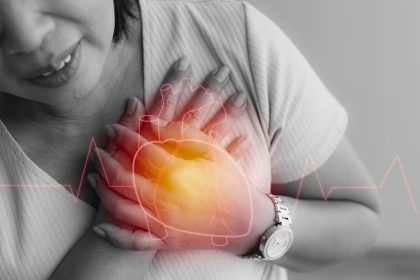A brain aneurysm develops when a blood vessel wall weakens, creating a balloon-like bulge that can threaten life if ruptured. While many aneurysms remain stable, understanding their formation and recognizing warning signs can help prevent severe complications. This complex vascular condition requires careful attention as it can develop silently over years before presenting any symptoms.
The formation process
Blood vessels in the brain form an intricate network crucial for delivering oxygen and nutrients. When vessel walls weaken, they can start to bulge under pressure. This process typically develops gradually, often influenced by various risk factors and health conditions. The weakening usually occurs at arterial junctions where blood vessels branch, making these areas particularly vulnerable to aneurysm formation.
The vessel wall consists of multiple layers that work together to maintain blood flow and vessel integrity. When these layers become compromised, the constant pressure of blood flow can cause the weakened area to balloon outward. This process may continue slowly over time, with the aneurysm growing larger as the wall becomes increasingly thin and stretched.
Key risk factors
Blood pressure and vascular health
Persistent high blood pressure strains blood vessel walls, particularly affecting arteries at the brain’s base. This continuous pressure can weaken vessel structure over time, increasing aneurysm risk. The damage from high blood pressure accumulates gradually, making consistent blood pressure management crucial for prevention. Regular monitoring and appropriate medication can help maintain healthy blood pressure levels and protect vessel integrity.
Genetic predisposition
Some people inherit blood vessel vulnerabilities that increase aneurysm risk. Conditions like polycystic kidney disease and certain connective tissue disorders can affect vascular strength. These inherited conditions often require careful monitoring throughout life, as they can affect multiple blood vessels throughout the body. Family history plays a significant role in determining risk levels, making genetic counseling and regular screening important for those with affected relatives.
Environmental and lifestyle factors
Smoking significantly weakens blood vessels, accelerating aneurysm formation through multiple mechanisms. The chemicals in tobacco smoke damage vessel walls directly while also increasing inflammation throughout the body. This combination creates particularly favorable conditions for aneurysm development. Additionally, recreational drug use, particularly cocaine and amphetamines, can cause dangerous blood pressure spikes that increase both formation and rupture risks.
Medical conditions and trauma
Severe head injuries can damage brain blood vessels, sometimes leading to aneurysm development. The trauma may not immediately cause an aneurysm but can create weaknesses that develop into one over time. Blood vessel inflammation from infections like meningitis can also contribute to weakened arterial walls. Chronic inflammatory conditions throughout the body may increase overall risk by affecting blood vessel health systemically.
Warning signs and detection
Detecting an unruptured brain aneurysm often proves challenging as symptoms may be subtle or absent. However, when present, warning signs typically result from the aneurysm pressing against brain tissues and nerves. A persistent headache that differs from usual patterns may develop, often accompanied by vision changes or pain above or behind the eye. Some individuals experience facial numbness, weakness, or difficulty with speech and concentration.
The situation becomes dramatically more urgent if an aneurysm ruptures. A sudden, explosive headache, often described as the worst pain ever experienced, signals this critical event. This may accompany nausea, vomiting, and extreme sensitivity to light. Neck stiffness often develops, and some individuals experience confusion, loss of consciousness, or seizures. Immediate medical attention becomes crucial at this point, as quick intervention significantly improves outcomes.
Prevention and management
Preventing aneurysm formation and rupture involves a comprehensive approach to vascular health. Blood pressure management stands as a cornerstone of prevention, requiring consistent monitoring and control through lifestyle changes and medication when necessary. Regular exercise, stress management, and a balanced diet rich in whole foods contribute to overall cardiovascular health.
Individuals at higher risk benefit from regular medical screening, which may include imaging studies to detect developing aneurysms before they cause problems. Those with known risk factors should work closely with healthcare providers to develop appropriate monitoring schedules and prevention strategies.
Treatment options
Current medical approaches to treating brain aneurysms vary based on individual circumstances. Small, stable aneurysms may require only careful monitoring through regular imaging studies. However, larger or high-risk aneurysms often need intervention to prevent rupture. Surgical options include traditional clipping procedures, where a small metal clip prevents blood flow into the aneurysm, and newer endovascular techniques using coils or stents to address the problem with minimal invasion.
Long-term outlook
Understanding brain aneurysm formation helps individuals recognize risks and take preventive action. While some risk factors remain beyond control, managing controllable factors through lifestyle changes and regular medical care can significantly reduce dangers. Awareness, prevention, and prompt attention to warning signs remain crucial elements in addressing this serious condition.
This story was created using AI technology.













